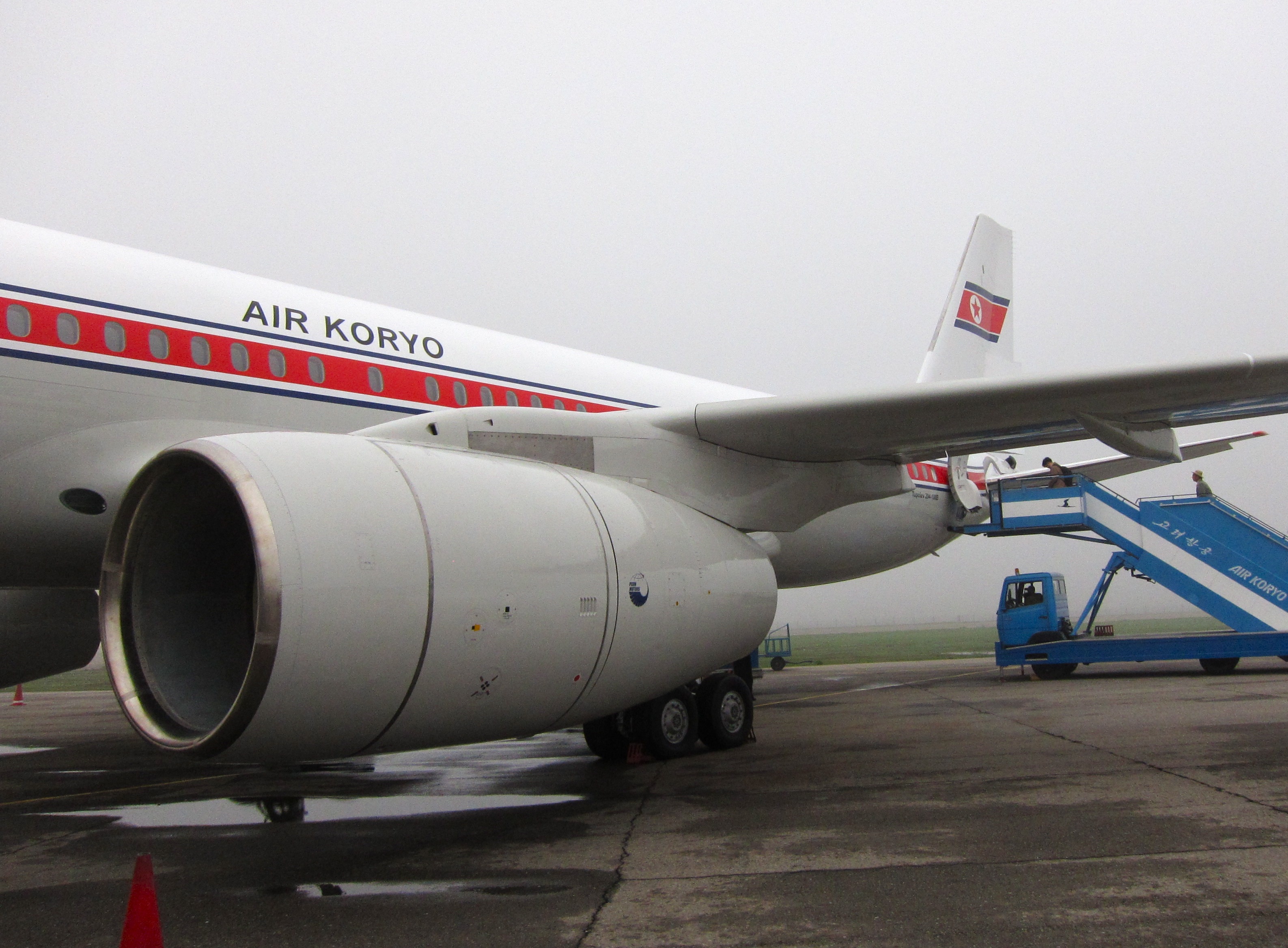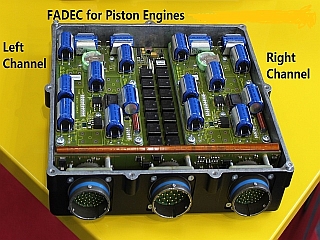|
Aviadvigatel PS-90
The Aviadvigatel PS-90 is a Russian high-bypass commercial turbofan rated at 16000 kgf (157 kN, 35,300 lbf) thrust. It powers Russian airliners such as the Ilyushin Il-96 and the Tupolev Tu-204/Tu-214 series and transport aircraft such as the Ilyushin Il-76. It is made by the Russian aircraft engine company Aviadvigatel, which is the successor of the Soviet Soloviev Design Bureau. "PS" are the initials of Pavel Soloviev (). Design and development With the advent of new generation of Soviet airliners, Aviadvigatel developed the PS-90 to satisfy the demands of economy, performance and exhaust emissions. It represented a huge advance over previous generations of 1960s era Soviet engines. The PS-90 is almost double the efficiency of those engines and is reasonably competitive to western engines of the 1980s such as the Pratt & Whitney PW2000. Design features It incorporates many firsts in a one-of-a-kind Russian engine with advanced technology features such as *High-bypas ... [...More Info...] [...Related Items...] OR: [Wikipedia] [Google] [Baidu] |
WikiProject Aircraft
A WikiProject, or Wikiproject, is an affinity group for contributors with shared goals within the Wikimedia movement. WikiProjects are prevalent within the largest wiki, Wikipedia, and exist to varying degrees within Wikimedia project, sibling projects such as Wiktionary, Wikiquote, Wikidata, and Wikisource. They also exist in different languages, and translation of articles is a form of their collaboration. During the COVID-19 pandemic, CBS News noted the role of Wikipedia's WikiProject Medicine in maintaining the accuracy of articles related to the disease. Another WikiProject that has drawn attention is WikiProject Women Scientists, which was profiled by ''Smithsonian Magazine, Smithsonian'' for its efforts to improve coverage of women scientists which the profile noted had "helped increase the number of female scientists on Wikipedia from around 1,600 to over 5,000". On Wikipedia Some Wikipedia WikiProjects are substantial enough to engage in cooperative activities with outsi ... [...More Info...] [...Related Items...] OR: [Wikipedia] [Google] [Baidu] |
Pavel Soloviev
Pavel Aleksandrovich Solovyov (Soloviev) (; June 26, 1917 – October 13, 1996) was a Soviet engineer born in Alekino in Kineshemsky District of Ivanovo Oblast. He specialised in the design of aircraft engines. Following the evacuation of the Rybinsk Aviation Institute in 1940, he went to work in Perm, where in 1953 he was made the head of his own design bureau - OKB-19 (now part of Aviadvigatel). His many awards and decorations included the Lenin Prize (1978), the USSR State Prize (1968), the title Hero of Socialist Labor (1966), four Orders of Lenin, the Order of the October Revolution, the Order of the Red Banner, the Order of the Red Star and the Medal "For Labour Valour". He was made deputy of the Supreme Soviet of the USSR three times. A street in Perm was named after him, a monument to him was built in Rybinsk Rybinsk (, ) is the second-largest types of inhabited localities in Russia, city of Yaroslavl Oblast in Russia. It lies at the confluence of the Volg ... [...More Info...] [...Related Items...] OR: [Wikipedia] [Google] [Baidu] |
Pratt & Whitney
Pratt & Whitney is an American aerospace manufacturer with global service operations. It is a subsidiary of RTX Corporation (formerly Raytheon Technologies). Pratt & Whitney's aircraft engines are widely used in both civil aviation (especially airliners) and military aviation. Its headquarters are in East Hartford, Connecticut.Contact Us ." Pratt & Whitney. Retrieved on January 7, 2011. "Corporate Headquarters Pratt & Whitney 400 Main Street East Hartford, CT 06108." The company is the world's second largest commercial aircraft engine manufacturer, with a 35% market share . In addition to aircraft engines, Pratt & Whitney manufactures gas turbine engines for industrial use, marine propulsion, and [...More Info...] [...Related Items...] OR: [Wikipedia] [Google] [Baidu] |
PS-90A
The Aviadvigatel PS-90 is a Russian high-bypass commercial turbofan rated at 16000 kgf (157 kN, 35,300 lbf) thrust. It powers Russian airliners such as the Ilyushin Il-96 and the Tupolev Tu-204/Tu-214 series and transport aircraft such as the Ilyushin Il-76. It is made by the Russian aircraft engine company Aviadvigatel, which is the successor of the Soviet Soloviev Design Bureau. "PS" are the initials of Pavel Soloviev (). Design and development With the advent of new generation of Soviet airliners, Aviadvigatel developed the PS-90 to satisfy the demands of economy, performance and exhaust emissions. It represented a huge advance over previous generations of 1960s era Soviet engines. The PS-90 is almost double the efficiency of those engines and is reasonably competitive to western engines of the 1980s such as the Pratt & Whitney PW2000. Design features It incorporates many firsts in a one-of-a-kind Russian engine with advanced technology features such as *High-bypass t ... [...More Info...] [...Related Items...] OR: [Wikipedia] [Google] [Baidu] |
Fuel Efficiency
Fuel efficiency (or fuel economy) is a form of thermal efficiency, meaning the ratio of effort to result of a process that converts chemical energy, chemical potential energy contained in a carrier (fuel) into kinetic energy or Mechanical work, work. Overall fuel efficiency may vary per device, which in turn may vary per application, and this spectrum of variance is often illustrated as a continuous energy profile. Non-transportation applications, such as Industrial sector, industry, benefit from increased fuel efficiency, especially fossil fuel power plants or industries dealing with combustion, such as ammonia production during the Haber process. In the context of transport, fuel economy is the energy efficiency in transportation, energy efficiency of a particular vehicle, given as a ratio of distance traveled per unit of Motor fuel, fuel consumed. It is dependent on several factors including engine efficiency, transmission (mechanics), transmission design, and tire design. In ... [...More Info...] [...Related Items...] OR: [Wikipedia] [Google] [Baidu] |
Il-76
The Ilyushin Il-76 (; NATO reporting name: Candid) is a multi-purpose, fixed-wing, four-engine turbofan strategic airlifter designed by the Soviet Union's Ilyushin design bureau as a commercial freighter in 1967, to replace the Antonov An-12. It was developed to deliver heavy machinery to remote and poorly served areas. Military versions of the Il-76 have been widely used in Europe, Asia and Africa, including use as an aerial refueling tanker and command center. The Il-76 has seen extensive service as a commercial freighter for ramp-delivered cargo, especially for outsized or heavy items that cannot be carried by other means. It has also been used as an emergency response transport for civilian evacuations as well as for humanitarian aid and disaster relief around the world. Thanks to its ability to operate from unpaved runways, it has been useful in undeveloped areas. Specialized models have also been produced for aerial firefighting and Reduced-gravity aircraft, reduced-grav ... [...More Info...] [...Related Items...] OR: [Wikipedia] [Google] [Baidu] |
Soloviev D-30
The Soloviev D-30 (now the Aviadvigatel PS-30) is a Soviet two-shaft low-bypass turbofan engine, officially referred to as a "bypass turbojet". It is one of the most powerful turbofan engines developed in the Soviet Union. Development of the turbofan spurred numerous growth versions with increased fan diameter and modified component arrangements. Developed in a short period of time (about three years), the D-30 turned out to be one of the most reliable engines in the history of Soviet engine development, and it was recognized with the USSR State Prize. Design and development The original version of the Soloviev D-30 was developed specifically to power the Tupolev Tu-134 short-to-medium range jet airliner; however, it also served as a base for the development of a family of advanced engines. Engine development was started in the early 60s. By 1966, the engine was put into serial production. The D-30 engine has a two-stage compression spool, a cannular combustion chamber and a 4-s ... [...More Info...] [...Related Items...] OR: [Wikipedia] [Google] [Baidu] |
Ilyushin Il-76TD-90 (Silk Way) (8738163541)
The public joint stock company Ilyushin Aviation Complex, operating as Ilyushin () or as Ilyushin Design Bureau, is a Russian aircraft manufacturer and design bureau, founded in 1933 by Sergey Vladimirovich Ilyushin. Soviet/Russian nomenclature identifies aircraft from Ilyushin with the prefix "Il-" (). Ilyushin has its head office in Aeroport District, Northern Administrative Okrug, Moscow. History Ilyushin was established under the Soviet Union. Its operations began on 13 January 1933, by order of P. I. Baranov, People's Commissar of the Heavy Industry and the Head of the Main Department of Aviation Industry. In 1970, the position of chief designer was taken by G. V. Novozhilov. In 2006, the Russian government merged Ilyushin with Mikoyan, Irkut, Sukhoi, Tupolev, and Yakovlev under a new company named United Aircraft Corporation. In July 2014, it was reported that Ilyushin and Myasishchev would merge to form the United Aircraft Corporation business unit Transport Aircr ... [...More Info...] [...Related Items...] OR: [Wikipedia] [Google] [Baidu] |
Rolls-Royce RB211
The Rolls-Royce RB211 is a British family of high-bypass turbofan engines made by Rolls-Royce Holdings, Rolls-Royce. The engines are capable of generating of thrust. The RB211 engine was the first production turbofan#Three-spool, three-spool engine and turned Rolls-Royce from a significant player in the aero-engine industry into a global leader. Originally developed for the Lockheed L-1011 TriStar, it entered service in 1972 and was the exclusive engine to power the L-1011. Mismanagement of the initial development and consequent cost issues led to the effective nationalisation of Rolls-Royce Limited, to save the workforce and the engine businesses important to the UK and many other aerospace and aircraft operating companies. In the early 1970s, the engine was reckoned by the company to be capable of at least 50 years of continuous development. The RB.211 was renamed, in 1989, to become the basis of the Rolls-Royce Trent family of engines when the RB211-524L was renamed to the ... [...More Info...] [...Related Items...] OR: [Wikipedia] [Google] [Baidu] |
Il-96
The Ilyushin Il-96 () is a Russian four-engined jet long-haul wide-body airliner designed by Ilyushin in the former Soviet Union and manufactured by the Voronezh Aircraft Production Association in Russia. It is powered by four high-bypass Aviadvigatel PS-90 two-shaft turbofan engines. As of 2024, the Il-96 is used as the main Russian presidential aircraft. The type's only remaining commercial operator in passenger service is Cubana de Aviación while Sky Gates Airlines operates a single cargo variant. Development Initial development Despite representing a huge advance in technology for the Soviet Union, the serviceable but ultimately disappointing performance of the Il-86, especially in regards to range spurred Ilyushin to begin planning for the long range Il-86D variant and the design was completed in 1976. The primary changes from the base Il-86 included slightly longer wings and increased fuel capacity. The Il-86D project was eventually cancelled, but it laid the found ... [...More Info...] [...Related Items...] OR: [Wikipedia] [Google] [Baidu] |
FADEC
A full authority digital engine (or electronics) control (FADEC) is a system consisting of a digital computer, called an "electronic engine controller" (EEC) or " engine control unit" (ECU), and its related accessories that control all aspects of aircraft engine performance. FADECs have been produced for both piston engines and jet engines. History The goal of any engine control system is to allow the engine to perform at maximum efficiency for a given condition. Originally, engine control systems consisted of simple mechanical linkages connected physically to the engine. By moving these levers the pilot or the flight engineer could control fuel flow, power output, and many other engine parameters. The mechanical/hydraulic engine control unit for Germany's BMW 801 piston aviation radial engine of World War II was just one notable example of this in its later stages of development. This mechanical engine control was progressively replaced first by analogue electronic engine cont ... [...More Info...] [...Related Items...] OR: [Wikipedia] [Google] [Baidu] |






